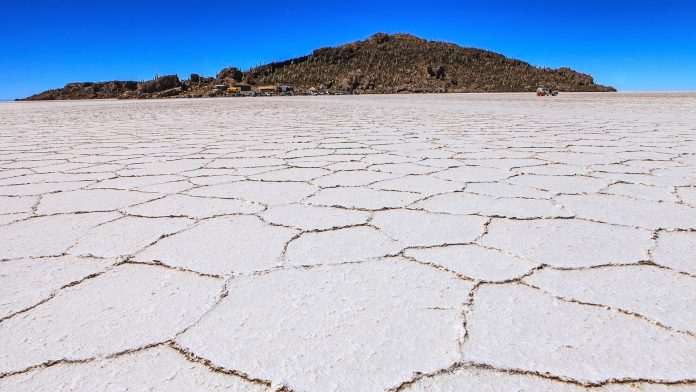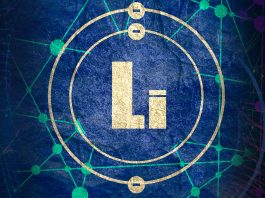Triangle Lithium is targeting the expansion and development of lithium brine assets within the Lithium Triangle using IBAT’s property technology.
Lithium demand is set to rapidly increase due to the role of the material in green technologies. To secure a supply of this ‘white gold,’ countries around the world are turning to Argentina, Chile, and Bolivia – the three countries that form the Lithium Triangle. The Lithium Triangle contains over half of the world’s lithium resources and can potentially satisfy the increasing global demand for lithium.
However, environmental concerns with lithium extraction have slowed down production in these areas. Now, it is clear that the lithium extraction industry needs to shift towards cleaner technologies in order to keep up with the rising demand for the commodity.
Triangle Lithium aims to be a world leader in the development of sustainable, commercial-scale lithium production projects, critical to helping the world meet its ambitious decarbonisation and electrification goals. Founded and led by individuals with long track records of finding, developing, and commercialising natural resources, the company undertakes its projects with an emphasis on care, collaboration, humility, transparency, integrity, and sustainability.
Triangle Lithium is a joint venture between two companies, Global Oil Management Group (GOMG) and Ensorcia Metals (Ensorcia), that have both executed projects demonstrating their capacity to deal with the type of regulatory, logistical, and operational problems that historically harm natural resource projects.
Earlier this year, it was announced that Triangle Lithium, through its affiliation with Ensorcia, will develop lithium with International Battery Metals’ (IBAT’s) direct lithium extraction (DLE) technology. The technology will enable sustainable lithium brine extraction in Argentina, in line with the company’s commitment to operating and growing responsibly and sustainably.
Identifying Triangle Lithium’s capabilities
Triangle Lithium is targeting the expansion and development of lithium brine assets in the Lithium Triangle. The company aims to lead the uprising trends towards sustainability and electrification by developing commercially viable projects for use in batteries used worldwide. With the help of its partners, Triangle Lithium is looking forward to executing projects around the Lithium Triangle.
Triangle’s initial project is located on 15,000 hectares in the northern portion of the world-class Antofalla Salar in Catamarca, Argentina. This plot is located adjacently to claims owned by Albemarle, the world’s largest lithium producer. Triangle is excited to bring all its knowledge from the energy sector and apply it to mining in the Lithium Triangle. With its experience operating in difficult regions of the world, it sees an opportunity to expand in Argentina. Triangle Lithium’s management can develop and deliver challenging projects in difficult places. The company plans on continuing to acquire, validate, and develop lithium-bearing resources within South America, with a particular focus on the Lithium Triangle.
As of June 2022, Triangle Lithium and its partners have already launched their drilling campaign along the Antofalla Salar. This is the first of six wells planned for the campaign, which includes 2,400 total metres of drilling, with each well having a depth of 400 metres. Triangle will then take samples from each of the wells that will give them an idea of the porosity, permeability, and chemical analysis of the wells.
Access to IBAT’s technology
Triangle Lithium, via its shareholder Ensorcia, has exclusive rights to use IBAT’s Mobile Extraction System within Argentina. This system is a modular and mobile DLE system. IBAT’s process will be the most carbon-efficient DLE process in the market. This system will result in the majority of water being recycled directly back into the salar, which is a key enabler of a successful permit grant. This process is critical in making sure that the delicate ecosystem of the salt flats, in which lithium extraction takes place, is not disturbed.
Traditional evaporation ponds take water from the salars and are unable to recycle it, which can cause massive environmental damage. IBAT’s modular units also use very little chemical consumption compared to solar evaporation ponds and other DLE technologies.
Triangle will use IBAT’s Mobile Extraction System to go after underutilised salars around the Lithium Triangle. Triangle compares these underutilised salars to the shale oil plays within the US in the early 2000s. Until fracking, these were deemed uneconomic. With this modular DLE system, Triangle will be able to extract large quantities of lithium from these salars that others could not. While other DLE processes are present on the market, none are as efficient as IBAT’s. Other systems require large amounts of capital to use and require multiple organisations to properly use the systems, whereas IBAT’s system does not.
About GOMG and Ensorcia
GOMG is a resource development holding company controlled by Harry Sargeant III. Mr Sargeant is a well-recognised investor focused on diversified energy and shipping industries. Within these industries, Mr Sargeant’s long list of accomplishments includes building and operating the world’s largest fleet of high-heat tankers, owning and operating multiple oil refineries in the US and Europe, and supplying the US military with the majority of its jet fuel needs during the Second Gulf War.
Ensorcia is a private corporation, controlled by Daniel Layton, formed to acquire, license, and develop the most advanced proprietary technologies and facilities available in the metals industry today. Amongst his many accomplishments, Mr Layton was at the forefront of developing the hydraulic fracking industry in the US – one of the most logistically and environmentally complex activities in world business.
Please note, this article will also appear in the eleventh edition of our quarterly publication.








